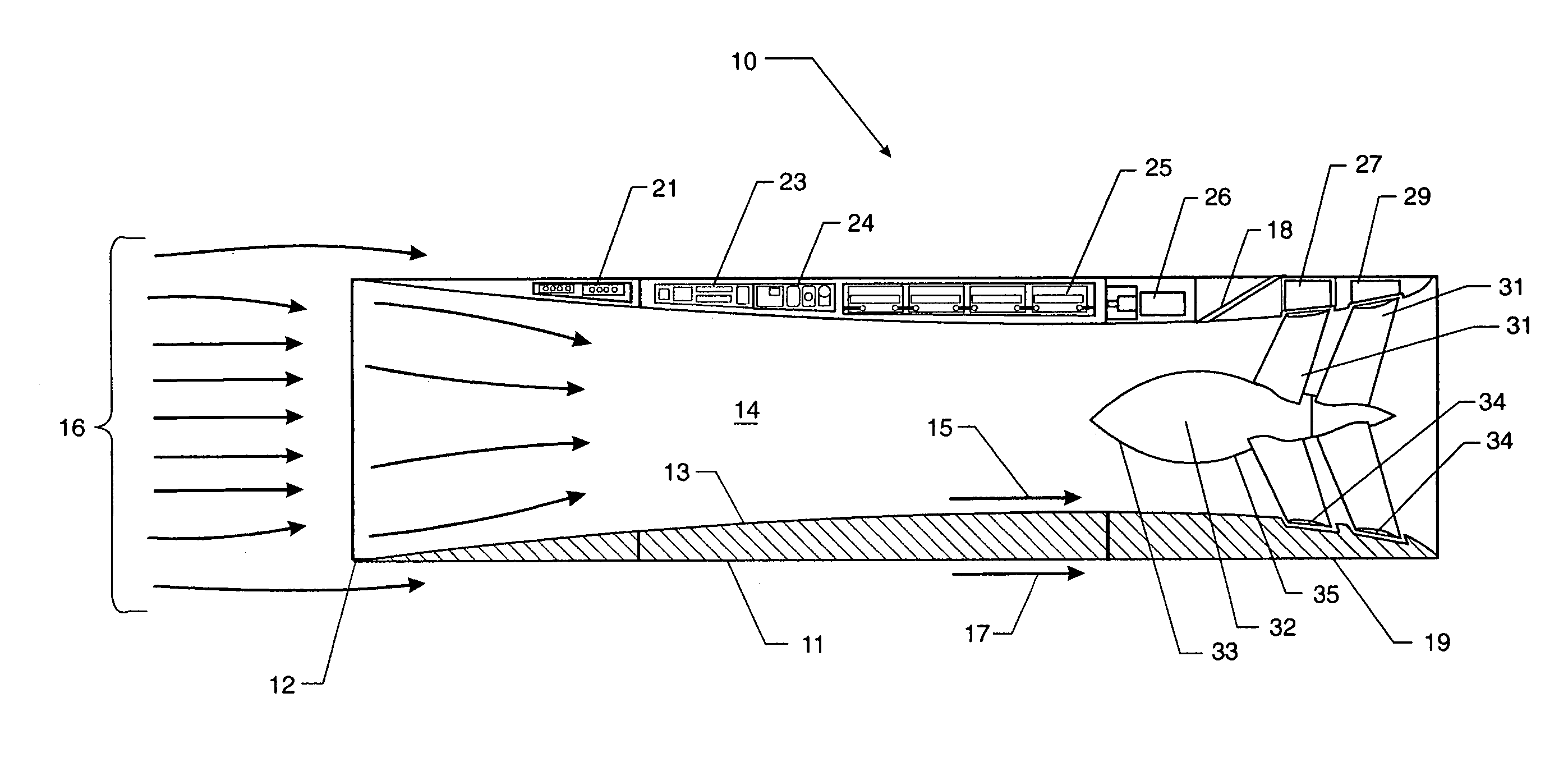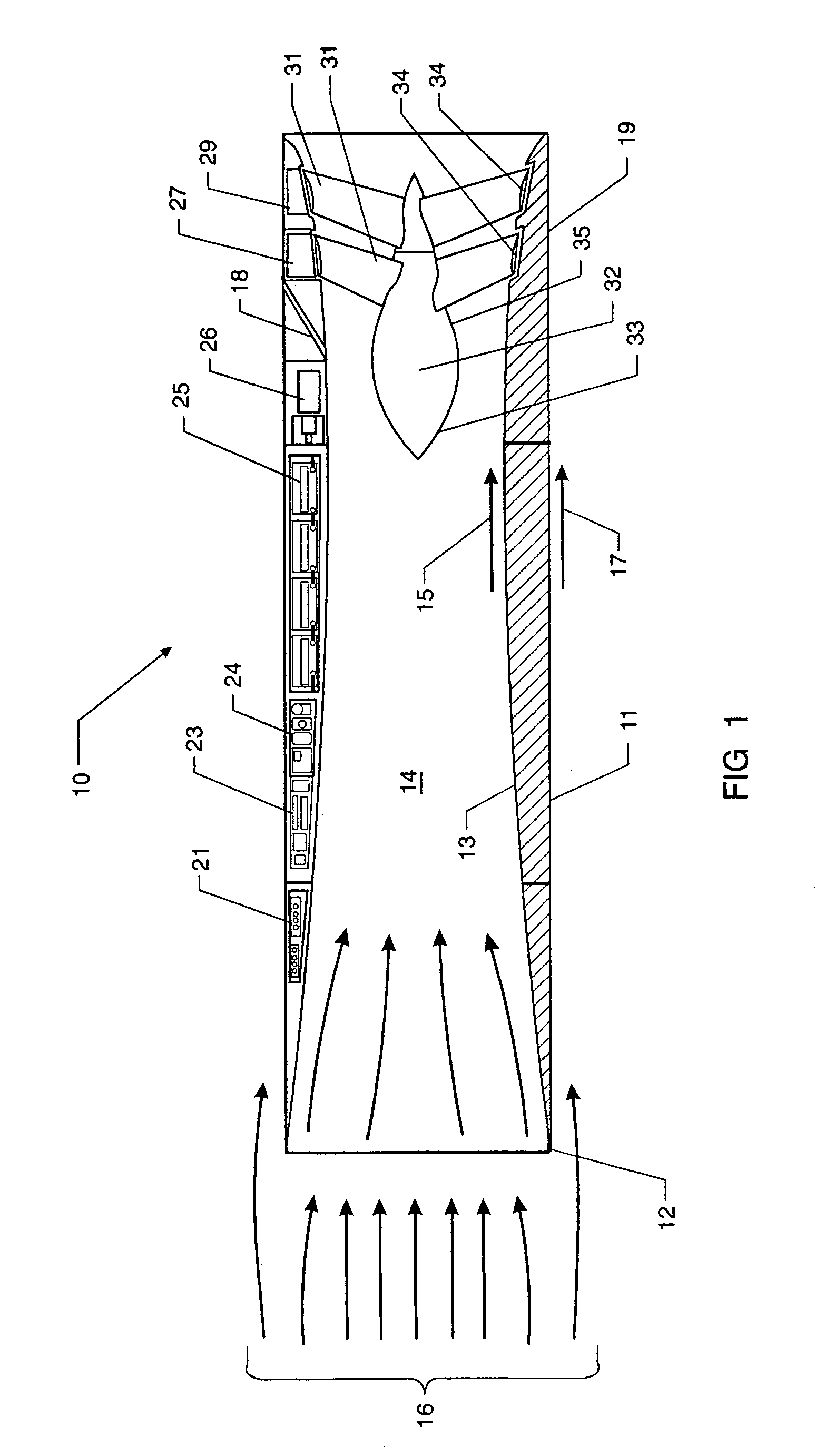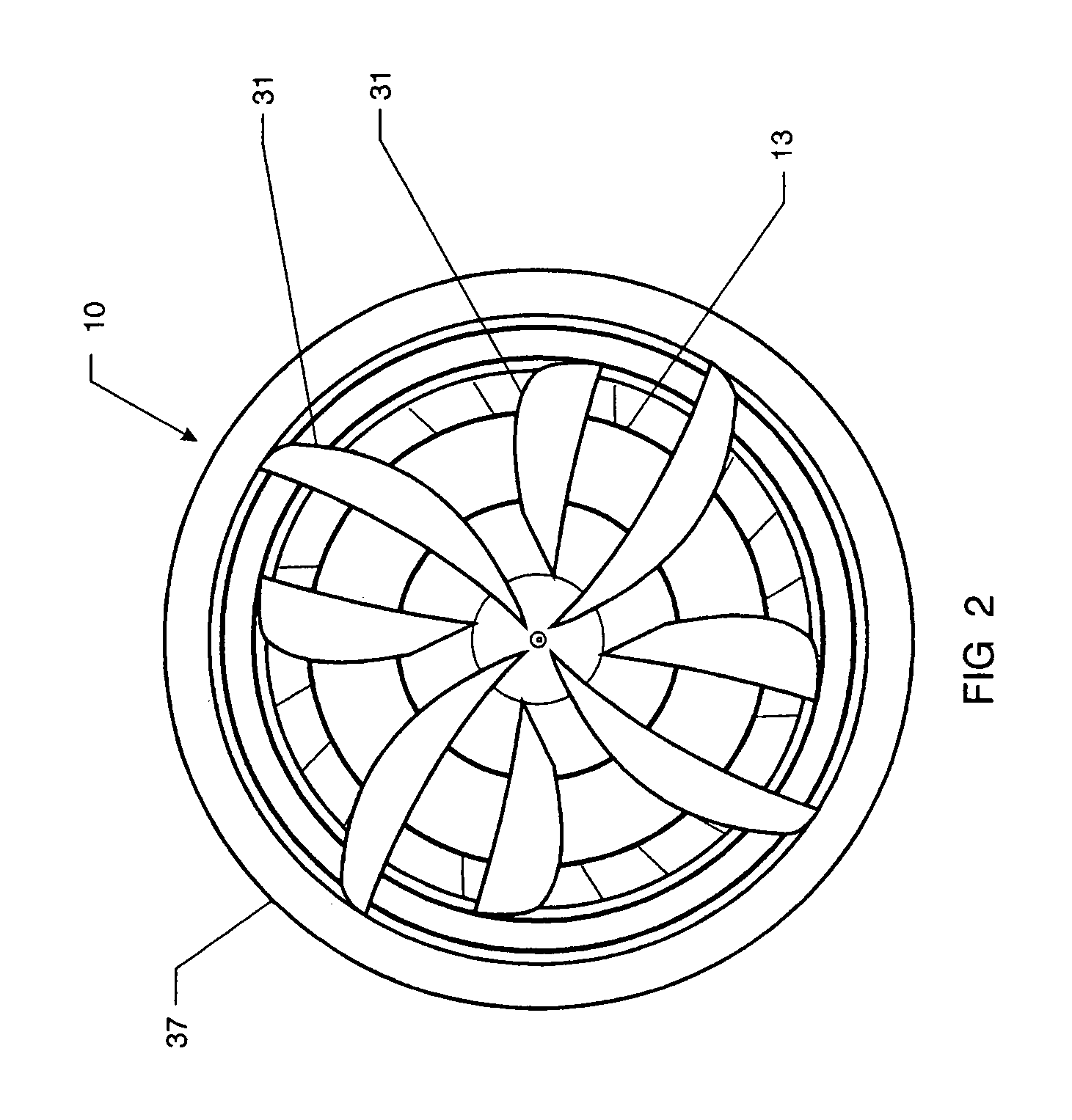Undersea vehicle
a technology for underwater vehicles and underwater structures, applied in underwater equipment, special-purpose vessels, vessel construction, etc., can solve problems such as unacceptably high unsatisfactory acoustic noise levels of present control surfaces and propulsor configurations,
- Summary
- Abstract
- Description
- Claims
- Application Information
AI Technical Summary
Benefits of technology
Problems solved by technology
Method used
Image
Examples
Embodiment Construction
[0017]Referring now to FIG. 1, the undersea vehicle, designated generally by the reference numeral 10, is shown with its major components. The vehicle has a hollow cylindrical hull 11 which encloses an internal duct 14. Hollow cylindrical hull 11 has three sections, an intake section 12, a throat section 13 and an output section 19. Intake section 12 has a sharpened leading edge. The payload and the operating elements of the vehicle are located between the hull 11 and the wall of the internal duct 14. The payload in this embodiment is an array of sensors 21, as used for a surveillance vehicle. Alternatively, a warhead and fusing mechanism can replace the sensor array 21. A central processor unit 23 receives information from the sensor array 21 and generates data to the guidance and control unit 24. A plurality of batteries located in the battery pack 25 provides power to operate the onboard electronics (sensors, navigation, control, and computer processor) and to operate a propulsio...
PUM
 Login to View More
Login to View More Abstract
Description
Claims
Application Information
 Login to View More
Login to View More - R&D
- Intellectual Property
- Life Sciences
- Materials
- Tech Scout
- Unparalleled Data Quality
- Higher Quality Content
- 60% Fewer Hallucinations
Browse by: Latest US Patents, China's latest patents, Technical Efficacy Thesaurus, Application Domain, Technology Topic, Popular Technical Reports.
© 2025 PatSnap. All rights reserved.Legal|Privacy policy|Modern Slavery Act Transparency Statement|Sitemap|About US| Contact US: help@patsnap.com



